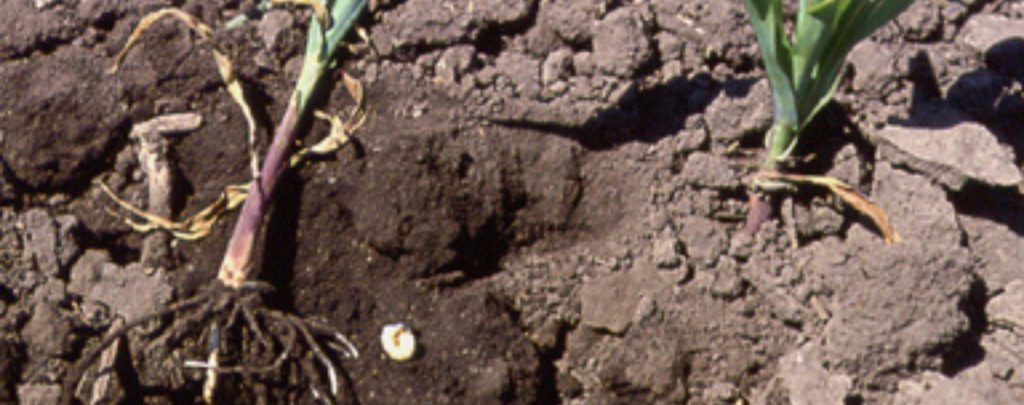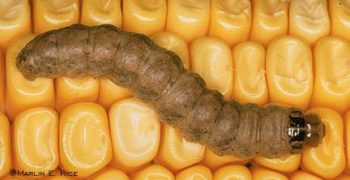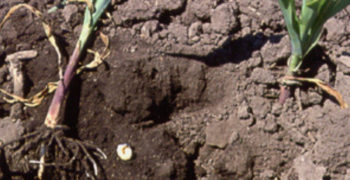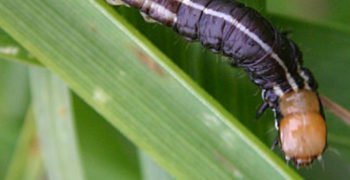Description:
Larvae, or grubs are white with orange-brown heads and six legs. The end of the abdomen is smooth and shiny with dark body contents showing through the skin. White Grubs are typically about 1 inch in length and often curl into a C shape. True White Grubs have small, scattered hairs with no distinctive pattern. They are the immature form of scarab beetles better known as May/June Beetles.
Damage:
White Grub damage is typically present in the roots of the corn plant. The roots will appear stunted, wilted, discolored, or dead seedlings where plants fail to emerge. They prune roots and can feed on the mesocotyl resulting in plant death.
Scouting:
If corn is being planted into a sod or set-aside field, or a field where Japanese Beetles were noted in high numbers the previous growing season, soil samples should be taken and examined for White Grubs before planting begins. After planting and in areas of poor emergence, dig some samples in that area to see if White Grubs are present.
Management:
Two or more signs of White Grubs prior to planting could result in a potential problem. There are some soil applied insecticides that are labeled for white grub control, but control may be inconsistent. Insecticides are not recommended for reuse treatments. If stand reduction, or potential stand reduction is high enough for replanting, a soil insecticide may be needed if the grubs are still actively feeding. Seed treatments are also available.



